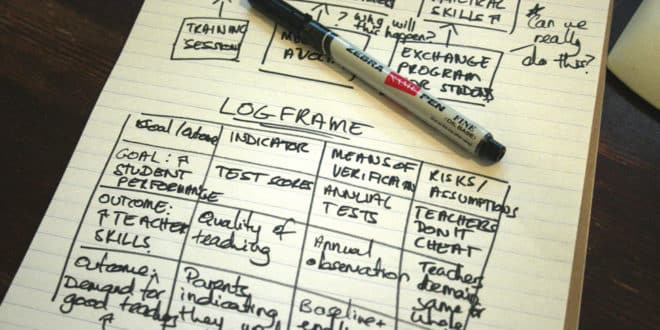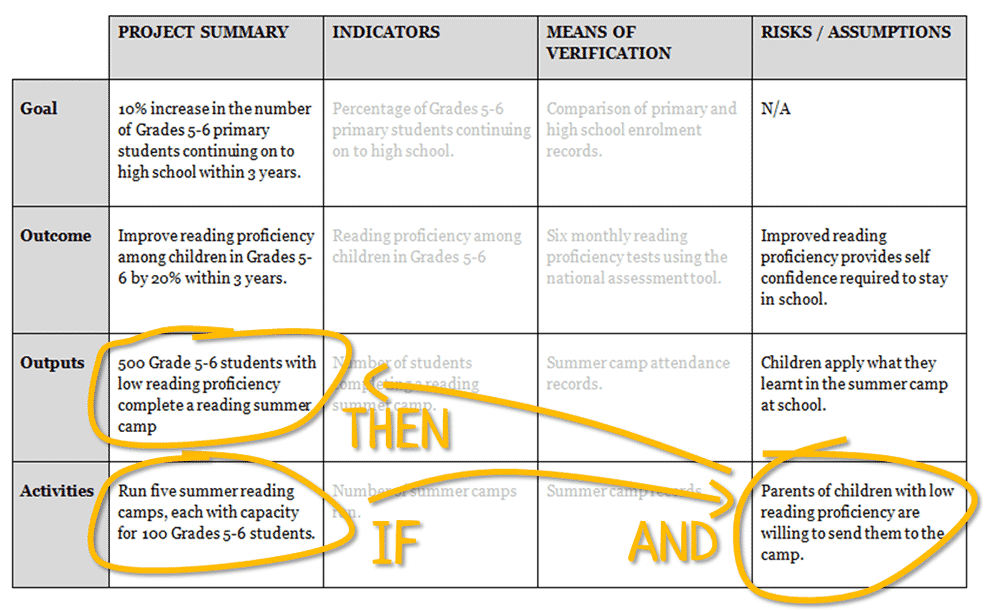

A logical framework matrix (or logframe) is the output of a program design process where you work out how the program activities will lead to the immediate outputs, and how these will lead to the outcomes and goal. In an ideal world, a logframe should be flexible and updated frequently.
Unfortunately, these days most donors require you to complete a logframe in their own rigid format, and this then becomes an unchangeable standard against which your program is assessed. In many cases logframes are treated more like an accounting tool than a program design tool.
But whether you love them or loath them, logframes are here to stay. So that means you need to be able to write one. In most cases the donor will provide their own logframe template (all of them are different). But if they don’t provide one then you can use this template and example as a starting point.
When preparing a lofgrame, one of the most difficult columns to complete is risks/assumptions. An easy way to check whether your risks/assumptions make sense is to look at the activities row and follow this logic: IF these activities are undertaken AND the assumptions are true THEN these outputs will be produced (see example below):

Then do the same with the outputs: IF the outputs are created AND the assumptions are true THEN the outcome will be achieved. And then the same for the outcome: IF the outcome is achieved AND the assumptions are true THEN the goal will be achieved.
This logframe template is appropriate when:
This logframe template is NOT appropriate when:
Don’t like this logframe template?
Find more logframe resources here.
If you would like to learn more about how to write logframes consider taking a free university course.
The Logical Framework Template by tools4dev is licensed under a Creative Commons Attribution-ShareAlike 3.0 Unported License. All other content is © tools4dev.
Did you find this article useful? Support our work and download all templates.